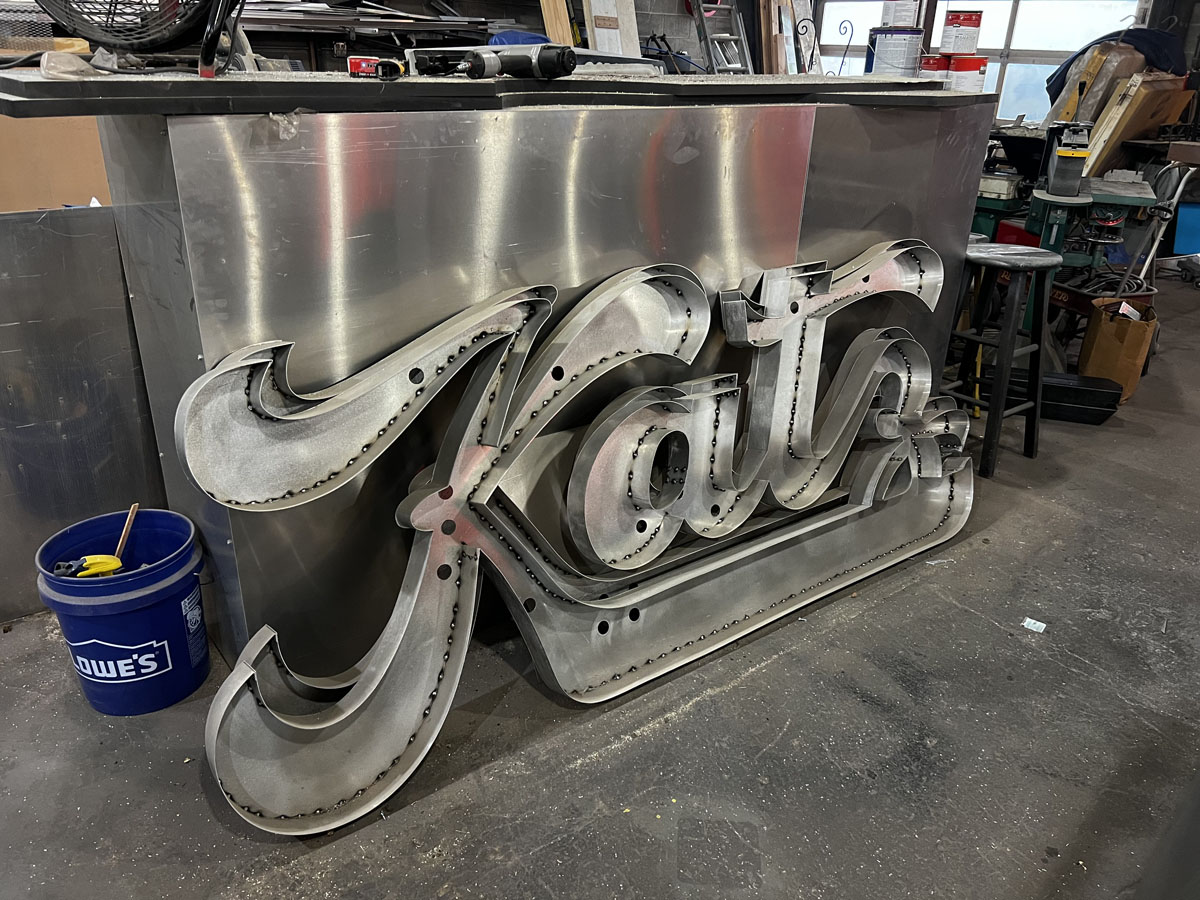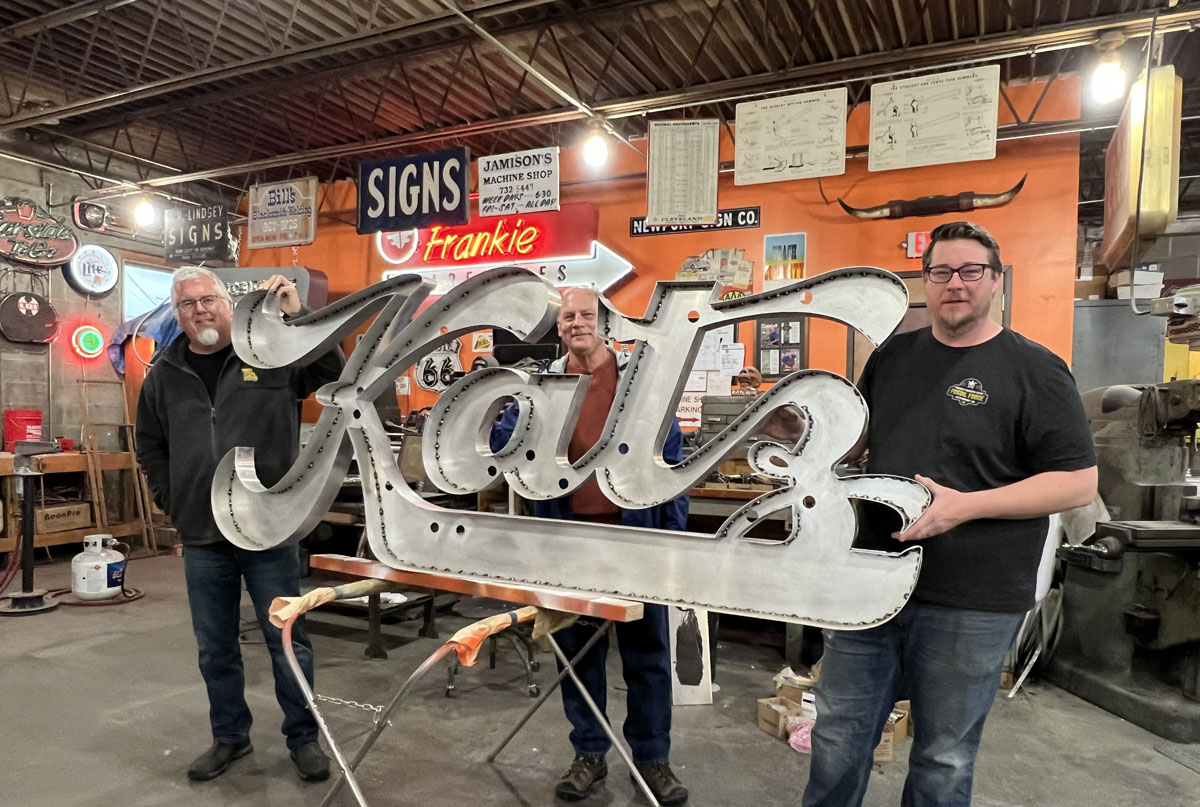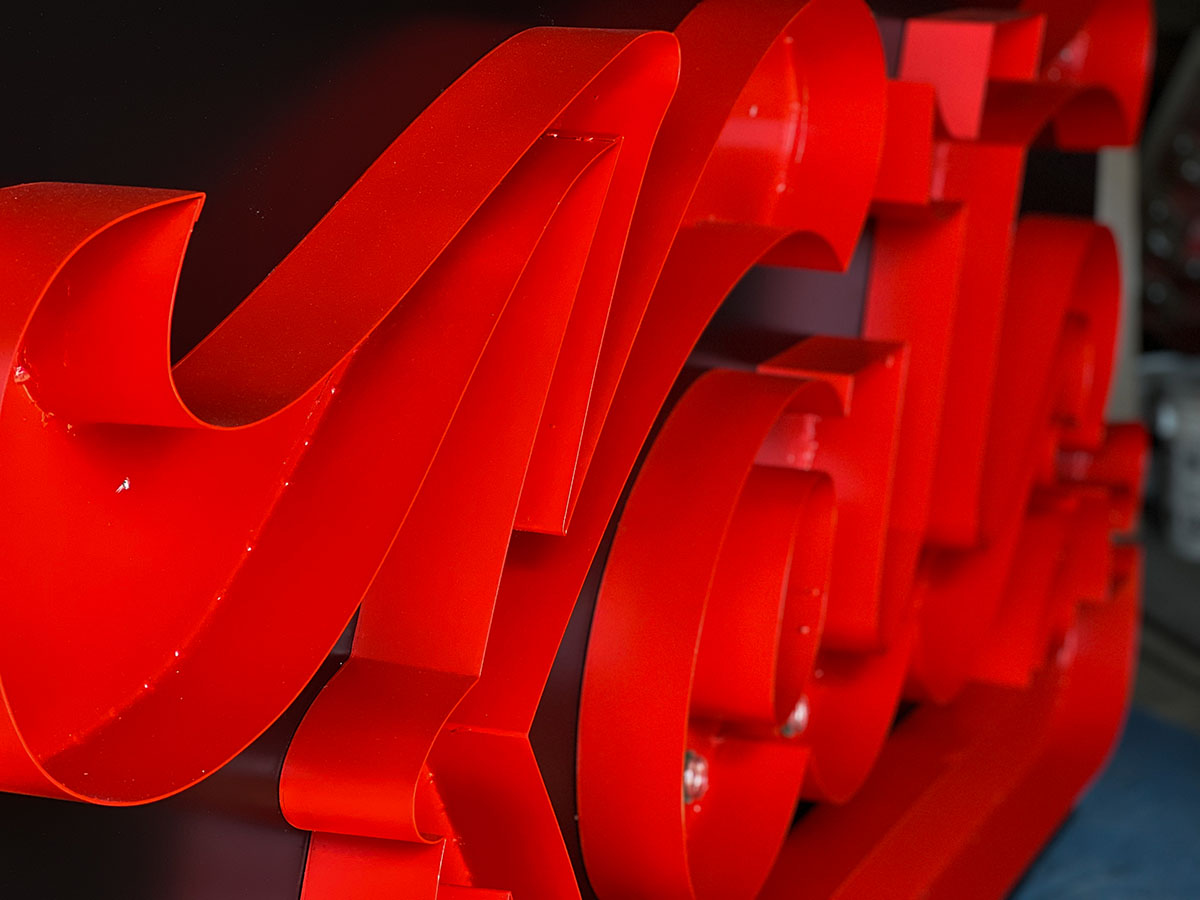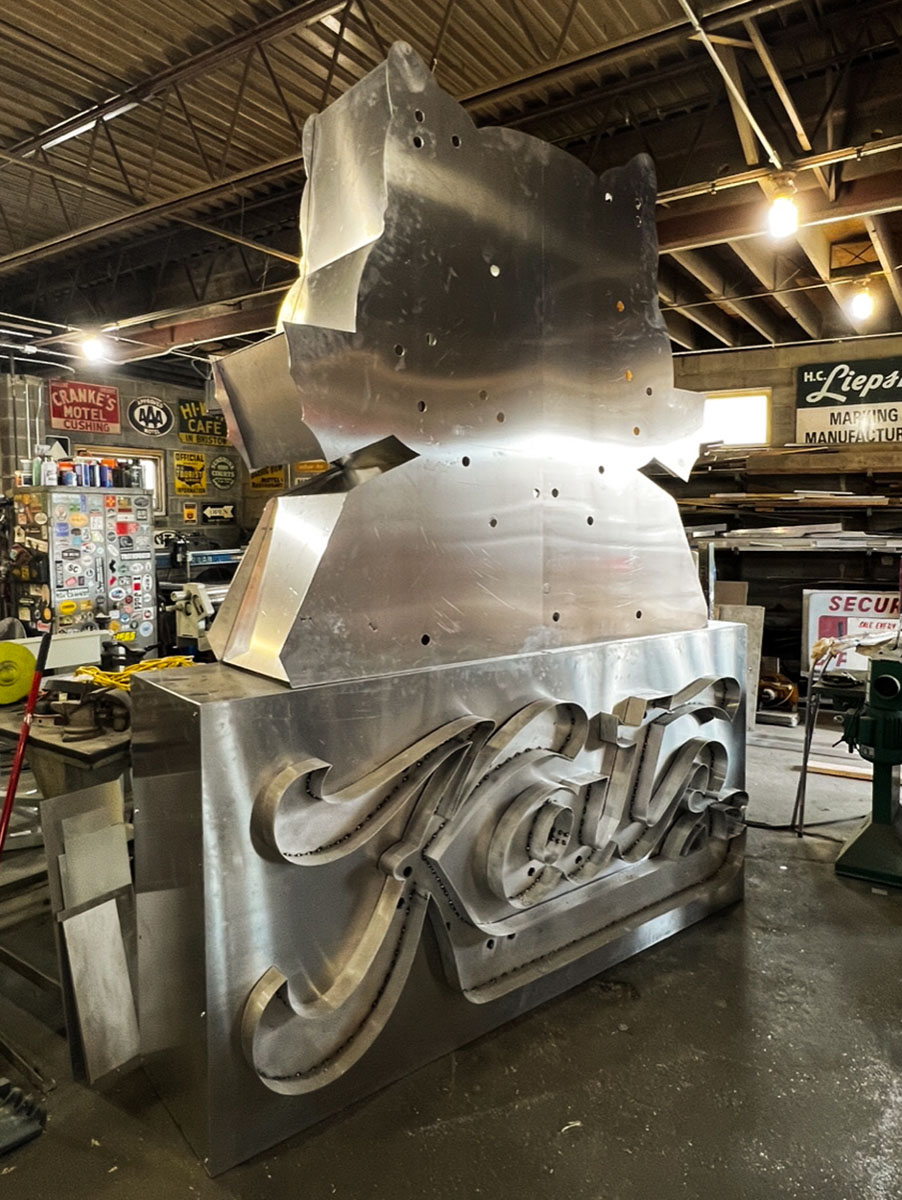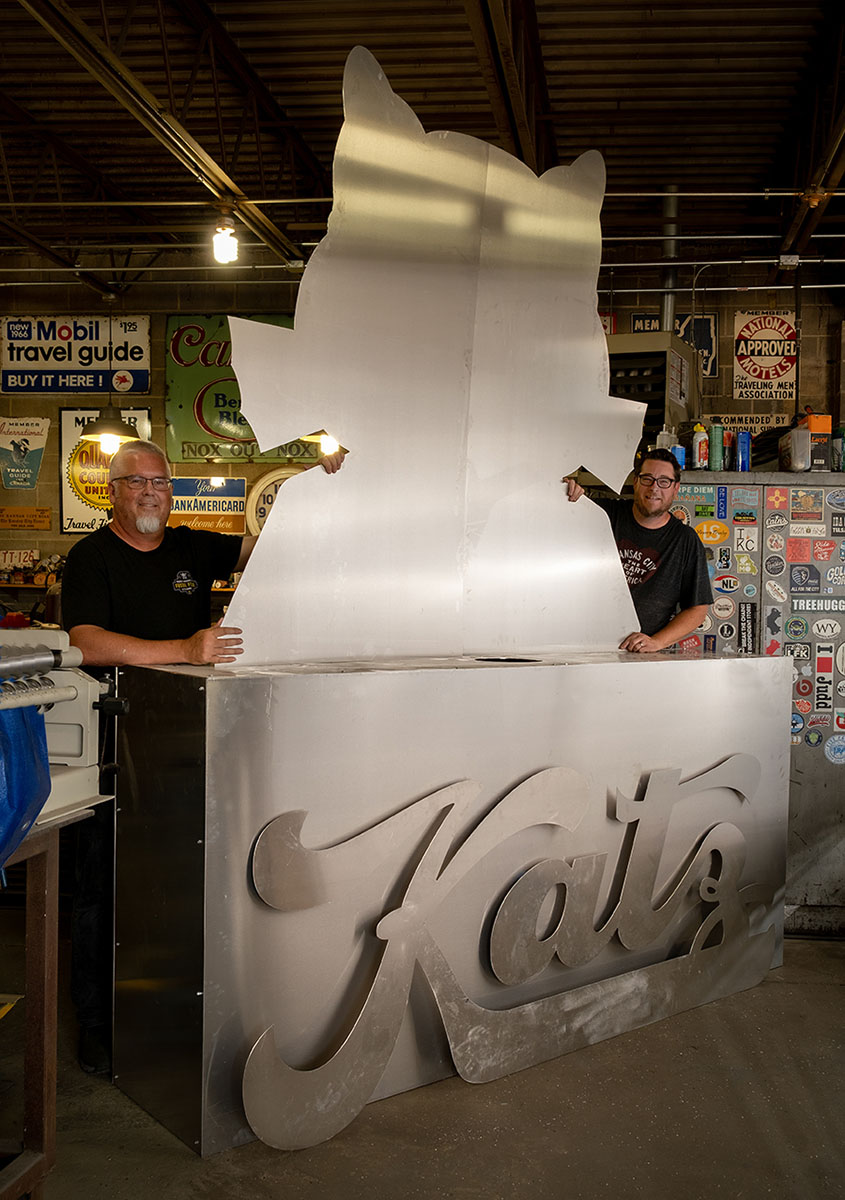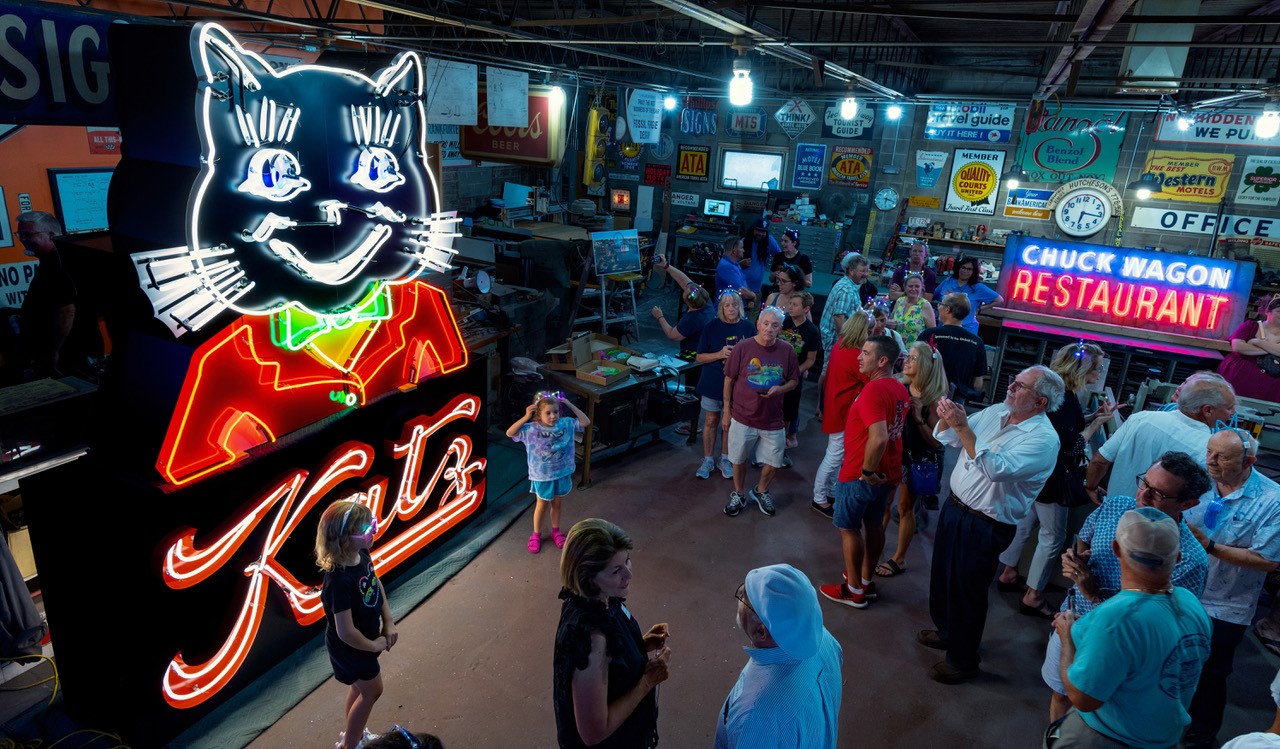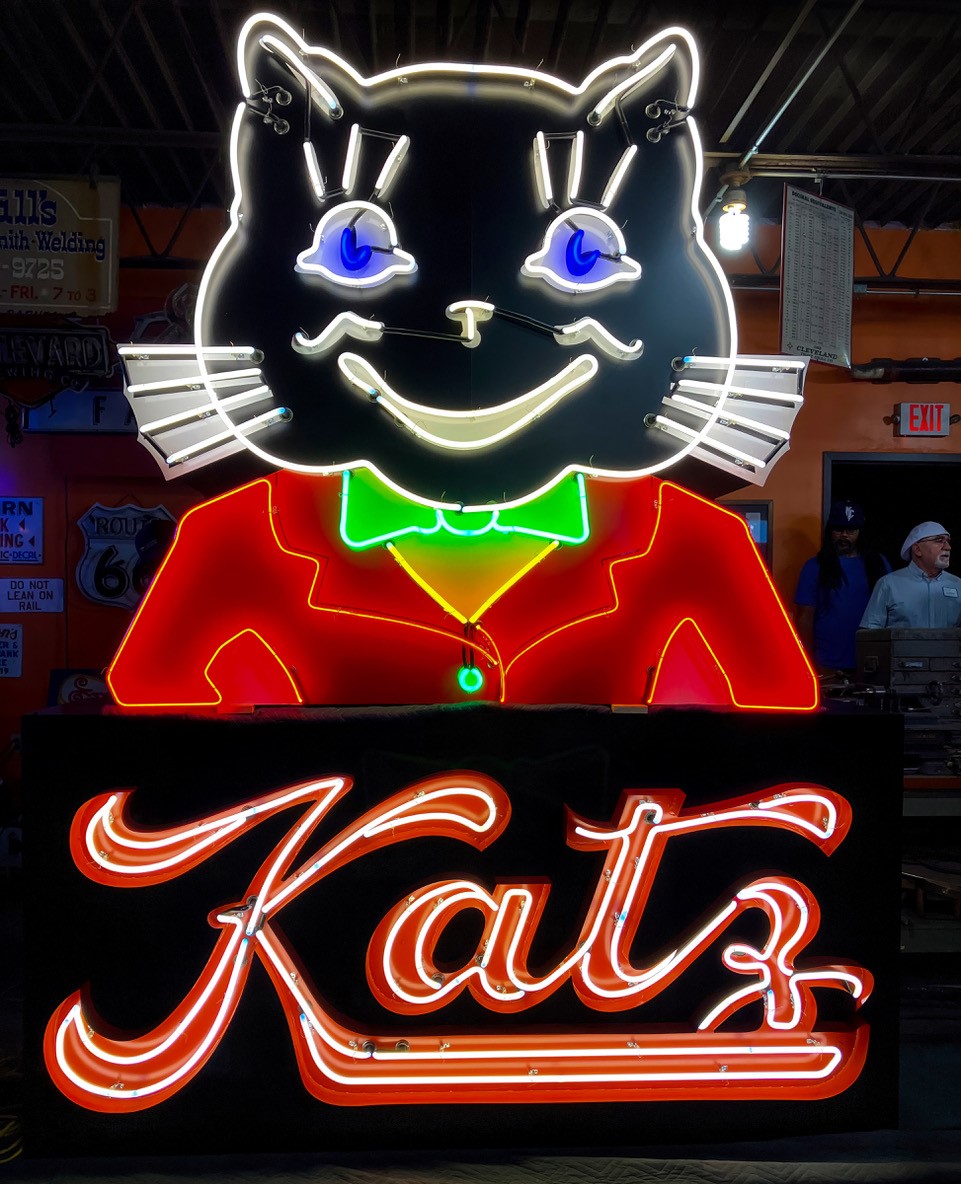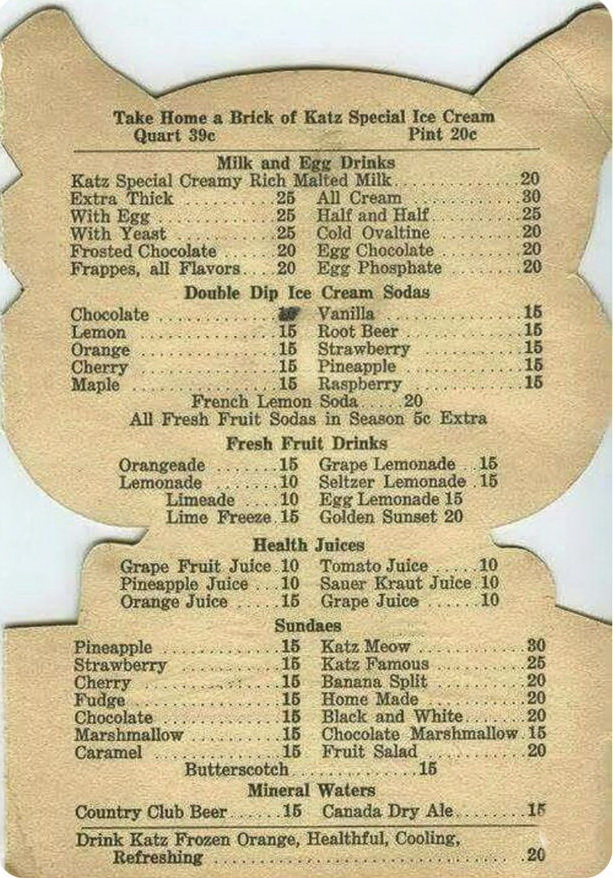Katz
Katz
Perhaps the most iconic neon sign in Kansas City history, our revolving Katz Drug Store sign makes a fitting centerpiece for the LUMI Neon Museum collection.
It all started in 1901 wen Isaac and Minnie Katz moved to Kansas City. Isaac earned $15 a week selling newspapers to railroad passengers at the Union Depot, then located in the west bottoms. With his savings, he opened a fruit stand in front of a nearby hotel. Ever the entrepreneur, Isaac recognized the benefit of advertising three apples for a dime when competitors were selling theirs for five cents each. Having sent for his brother in St. Paul, Minnesota, Isaac and Michael Katz opened two stores in downtown Kansas City in 1914, forming a business partnership that would last their lifetimes.
1917 and World War I brought a one-cent wartime tax on cigarettes. In one of the most famous and strategic moves in the company’s history Michael Katz decided to absorb the one-cent tax other stores passed along to their customers. The brothers posted signs stating, Cigarettes same old price—Katz pays the tax. As Isaac Katz would often say, “Fast nickels are better than slow dimes”.
The Katz brothers innate sense of marketing enabled the company to blossom: 65 stores in five midwestern states; $100 million annual sales; 250,000 customers per day; 3,000 employees; 120 registered pharmacists; 57 years in business.
The most famous Katz store by most accounts opened in December 1934 at the corner of Westport Road and Main Street in Kansas City, Missouri. With its art moderne building design and deco-inspired clock tower, it quickly became a destination for many Westport area residents.
Titled “World’s Leading Cut Rate Drug Store,” its 20,000 square feet with balcony supported two full floors of merchandise, fed 29 cash registers, and sold everything from women’s cosmetics to candy; from beer to cigars to pet monkeys; and of course banana splits at its soda fountain. It even had a deli and offered tire and auto service.
The store chain was sold to Skaggs Drug Company in 1971.
Perhaps the most iconic neon sign in Kansas City history, our revolving Katz Drug Store sign makes a fitting centerpiece for the LUMI Neon Museum collection.
It all started in 1901 wen Isaac and Minnie Katz moved to Kansas City. Isaac earned $15 a week selling newspapers to railroad passengers at the Union Depot, then located in the west bottoms. With his savings, he opened a fruit stand in front of a nearby hotel. Ever the entrepreneur, Isaac recognized the benefit of advertising three apples for a dime when competitors were selling theirs for five cents each. Having sent for his brother in St. Paul, Minnesota, Isaac and Michael Katz opened two stores in downtown Kansas City in 1914, forming a business partnership that would last their lifetimes.
1917 and World War I brought a one-cent wartime tax on cigarettes. In one of the most famous and strategic moves in the company’s history Michael Katz decided to absorb the one-cent tax other stores passed along to their customers. The brothers posted signs stating, Cigarettes same old price—Katz pays the tax. As Isaac Katz would often say, “Fast nickels are better than slow dimes”.
The Katz brothers innate sense of marketing enabled the company to blossom: 65 stores in five midwestern states; $100 million annual sales; 250,000 customers per day; 3,000 employees; 120 registered pharmacists; 57 years in business.
The most famous Katz store by most accounts opened in December 1934 at the corner of Westport Road and Main Street in Kansas City, Missouri. With its art moderne building design and deco-inspired clock tower, it quickly became a destination for many Westport area residents.
Titled “World’s Leading Cut Rate Drug Store,” its 20,000 square feet with balcony supported two full floors of merchandise, fed 29 cash registers, and sold everything from women’s cosmetics to candy; from beer to cigars to pet monkeys; and of course banana splits at its soda fountain. It even had a deli and offered tire and auto service.
The store chain was sold to Skaggs Drug Company in 1971.
